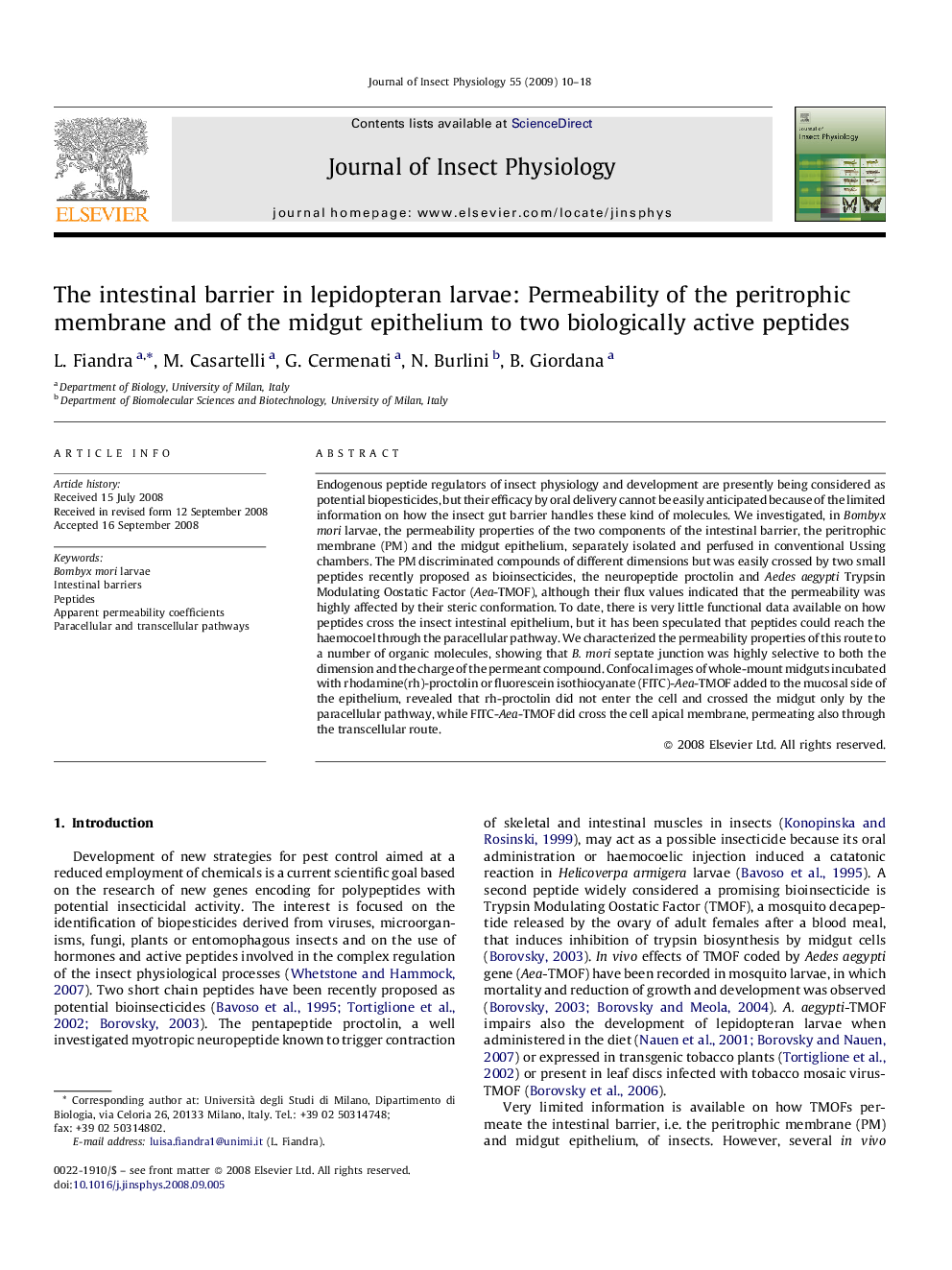| Article ID | Journal | Published Year | Pages | File Type |
|---|---|---|---|---|
| 2841117 | Journal of Insect Physiology | 2009 | 9 Pages |
Endogenous peptide regulators of insect physiology and development are presently being considered as potential biopesticides, but their efficacy by oral delivery cannot be easily anticipated because of the limited information on how the insect gut barrier handles these kind of molecules. We investigated, in Bombyx mori larvae, the permeability properties of the two components of the intestinal barrier, the peritrophic membrane (PM) and the midgut epithelium, separately isolated and perfused in conventional Ussing chambers. The PM discriminated compounds of different dimensions but was easily crossed by two small peptides recently proposed as bioinsecticides, the neuropeptide proctolin and Aedes aegypti Trypsin Modulating Oostatic Factor (Aea-TMOF), although their flux values indicated that the permeability was highly affected by their steric conformation. To date, there is very little functional data available on how peptides cross the insect intestinal epithelium, but it has been speculated that peptides could reach the haemocoel through the paracellular pathway. We characterized the permeability properties of this route to a number of organic molecules, showing that B. mori septate junction was highly selective to both the dimension and the charge of the permeant compound. Confocal images of whole-mount midguts incubated with rhodamine(rh)-proctolin or fluorescein isothiocyanate (FITC)-Aea-TMOF added to the mucosal side of the epithelium, revealed that rh-proctolin did not enter the cell and crossed the midgut only by the paracellular pathway, while FITC-Aea-TMOF did cross the cell apical membrane, permeating also through the transcellular route.
